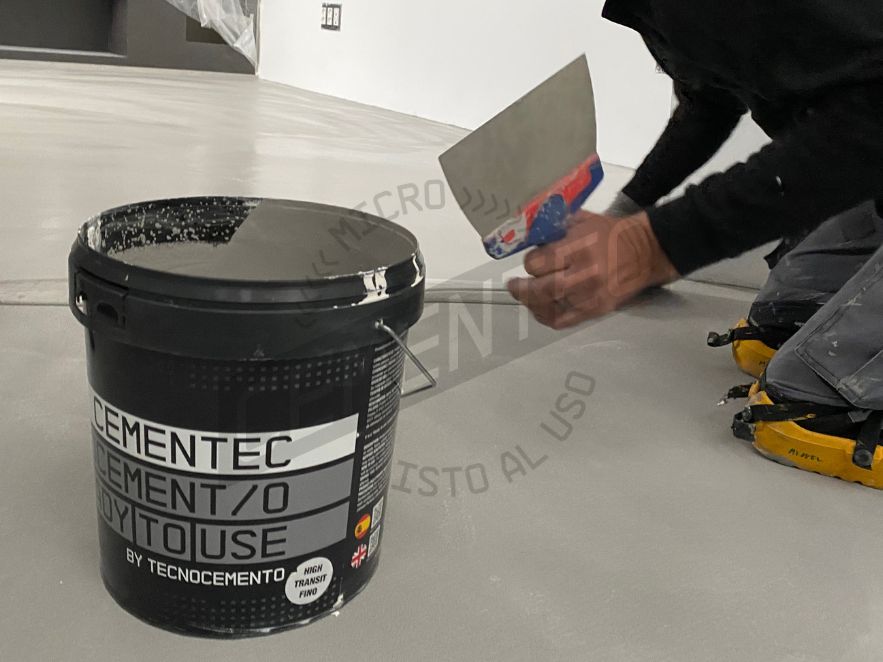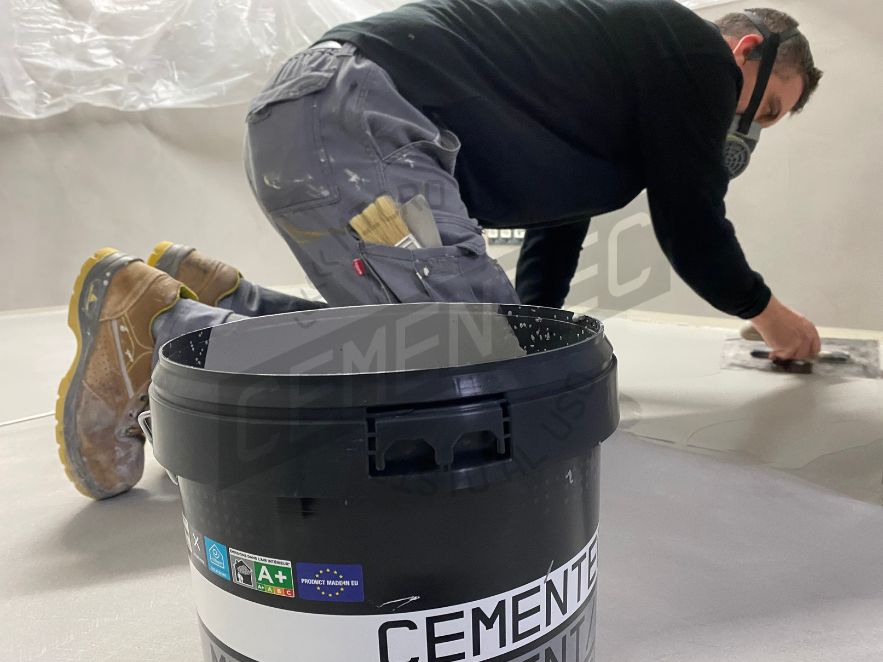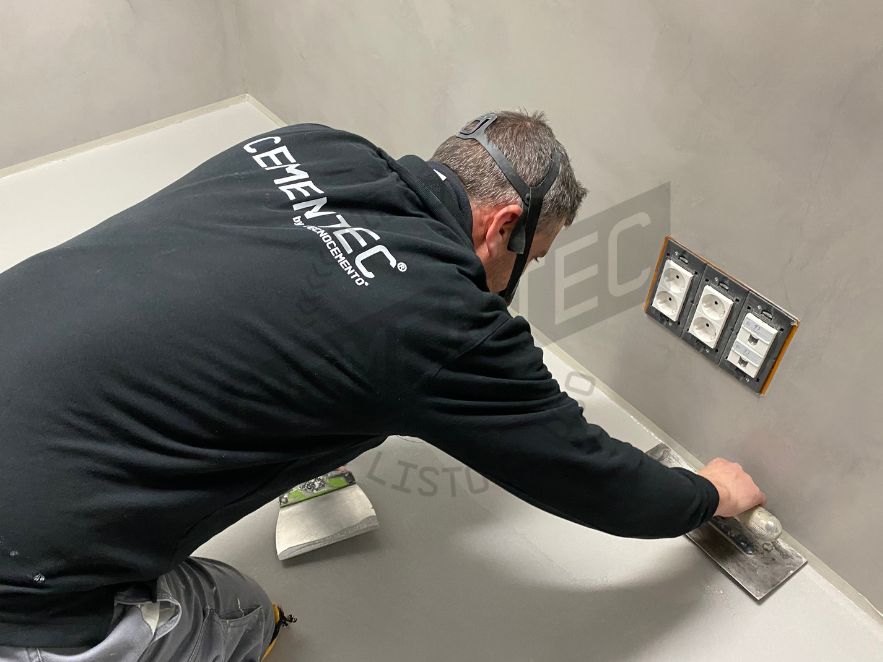Do you know the relationship between both of materials and the controversy they create? Although they may seem same coatings because they have similar aesthetics and shares the concept of “cement” itself, it is true that they are totally different coatings.
That’s right, we can see large dissimilarities on the application technique and the way of use, we can even observe them in the product’s own result or in the way in which they react to wear, blows or liquids leakages. Taking also into account the latent difference between the profitability offered by each of them, compared to the effort or time spent on preparation and use that they require.
On the basis of all these issues, Cementec finds it interesting to propose a face-to-face “fight” between both products. A fight, between polished concrete vs microcement, to define both concepts separately, compare them, outline their similarities, as well as clarify when it would be interesting to choose for ready-to-use microcement over the other option.
Shall you come with us?
Round 1: Microcement and polished concrete
The first round is when we will expound the concepts, we have to explain the difference and likeness between these products.
What is Microcement Ready to use?
First at all, we could say that ready-to-use microcement is a type of decorative coating especially indicated for surface decoration. This is a material that stands out for being resistant, versatile and easy. It has polished and smooth finishes, which give the surface a minimalist and modern character.
Do you think that you might need more information to know this type of coating? Look into it or assess the option of apply the microcement in any of your renovations by taking a look to our article on “How to apply microcement in 4 easy steps?”
Tomás Amat, arquitecto, creativo y gerente de Cementec.
What is polished concrete?
On the other hand, polished concrete cannot be understood as a coating itself but it acquires the definition of “finish product”, because the polish is made to that end. This material is ideal for industrial areas (industrial unit, offices, shopping malls, etc.) as well as it can also be applied indoor except for jobs at height.
As differentiating features, it has a thickness between 5-10 cm. Likewise, polished concrete does have expansion joints but it is a cheaper material when compared to microcement.
Where is it recommended to use? Its fullness can be experienced when applied on floors, although there are still different defenders on both sides and it is not clear whether polished concrete or microcement floors are better. It can also be applied on swimming pools, fireplaces, stairs, bathrooms or furniture (if these are created).
Round 2: comparative between microcement and polished concrete

To sum up, CEMENTEC is detailing its similarities and differences as a check list between Microcement and polished concrete as follows:
- Polished concrete or microcement are two different products. They are similar in some points, such as the aesthetic look, and differ in others, such as the application technique or the results obtained with each one.
- When installing or applying polished concrete, skilled professional is required, it means, people who know the job and dedicate themselves to it. The microcement need some knowledge, but we can apply for our own. Although, from our side, we keep recommending the application of microcement ready to use by specialists.
- Colours in polished concrete cannot be controlled effectively, as they suffer from uncontrollable bumps or variations. Something that does not happen with microcement, being able to obtain desired colours. The colours in the polished concrete.
- Microcement adheres to existing surfaces, even some to some wet areas and for that, it is a coating. However, polished concrete is not adherent and cannot be applied on existing surfaces due to is large thickness. That is why, as we have commented before, professionals in the matter have contrary opinions about which is better, microcement or polished concreted floors.
- Finally, in reference to its application, polished concrete needs expansion joints because you cannot apply areas larger than 25 sqm. Microcement itself reaches larger continuous surfaces without the need of joints.
If you want to see a comparison between polished cement, polished concrete and ready-to-use microcement, please see this article.
Tomás Amat, architect, creative and manager of Cementec.
So, what is the difference between smoothed cement and microcement?
Microcement is a thin, versatile 2-3 mm thick coating that can be applied to floors, walls, ceilings and furniture without the need to remove the existing surface. Thanks to its seamless and continuous finish, it is ideal for quick renovations and creates a spacious and modern feel.
On the other hand, smoothed concrete is a thicker and heavier material, mainly recommended for flooring. Its application requires a stable base to avoid cracks and has visible joints, which limits its use to horizontal surfaces.
In summary, microcement is a flexible and aesthetic option for various surfaces, while smoothed cement is used exclusively for flooring because of its strength and thickness.
Round 3: Advantages and disadvantages of polished concrete vs microcement
Pros and cons? Many, that’s why it’s important to comment on them. Keep reading so you don’t miss anything related to this battle of materials.
Advantages of ready-to-use microcement
- It is little weight and high resistant.
- It has adhesion capacity.
- Easy to clean and simple to maintain.
- Recreates an area of “continuous flooring” by not having joints.
- Its application does not require big works or renovations.
- It can be applied on other surfaces and is customizable.
Disadvantages of ready-to-use microcement
- Abrasive materials cannot be used for cleaning*.
- Requires periodic application of maintenance wax.
- Drying of liquids that have been spilled before absorption is recommended*.
*Except when using Finish Forte Plus protection.
Advantages of polished concrete
- Economic material.
- It has the capacity to cover flaws and unevenness in the floor.
- Does not require almost any maintenance.
Disadvantages of polished concrete
- Only polished cement can be applied to floors.
- It has joints and can appear cracks.
- It is a material with low porosity and no acoustic and thermal insulation.
- Loses its shine over time.
- It requires meshing for its structure and to customize it with colours it requires dye.
Close fight, but finally, the difference between microcement and polished concrete seems to have a clear winner: ready-to-use microcement, don’t you think so?

Final Round, KO. Do you know our microcement material calculator?
If you didn’t know it, we introduce it you. Cementec has developed a calculator to estimate the materials that you need to carry out your projects and renovations applying microcement and thus, prepare a customized budget.
Create your roadmap quickly and easily. Be sure to try it!
Did you find this article interesting about the difference between microcement and polished concrete? Share your opinions on our social networks!





